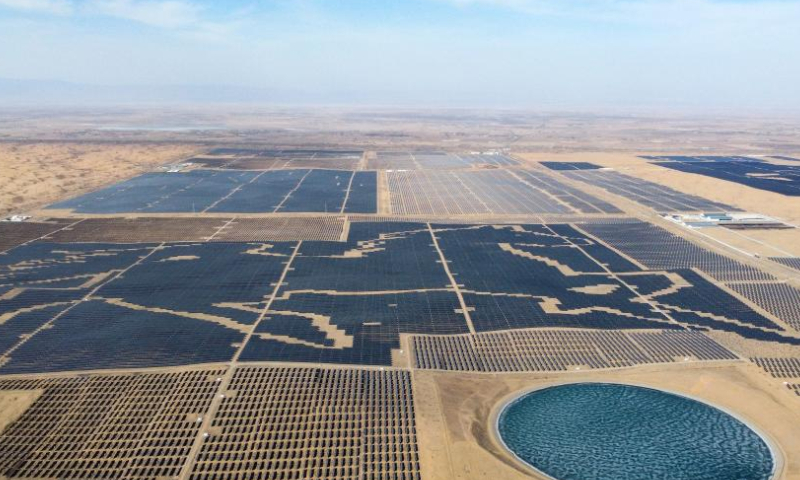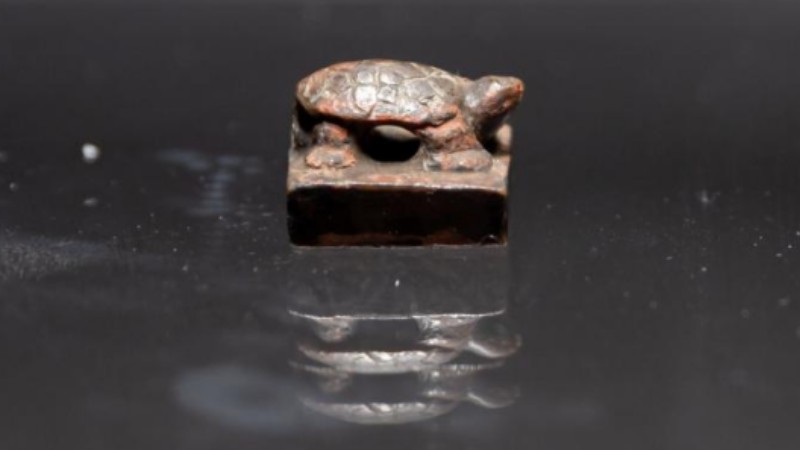Inner Mongolia Autonomous Region seeks to cover 91 percent of its towns and cities with clean energy heating by the end of 2023: official

This aerial photo taken on March 3, 2023 shows a view of the photovoltaic power base in Dalad Banner, Erdos, north China's Inner Mongolia Autonomous Region. Located in the east of Kubuqi Desert, a photovoltaic power base has been built in Dalad Banner with an installed capacity of 1 million kilowatts, generating about 2 billion kWh of electricity yearly. (Xinhua/Bei He)
Inner Mongolia Autonomous Region seeks to expand clean energy heating to cover 91 percent of its towns and cities with clean energy heating by the end of this year and to improve the region’s ability in dealing with garbage and sewage water, in order to improve the living conditions for the residents, Guo Yufeng, head of the region’s Housing and Urban-Rural Development said on Sunday.
The region seeks to push building of green and low carbon cities. It has conducted pioneering projects in Arxan City and Ordos city, Guo said when discussing a government work report delivered by Chinese Premier Li Keqiang at the opening meeting of the first session of the 14th National People's Congress, held at the Great Hall of the People on Sunday morning.
Moreover, Guo said the region intends to consolidate clean heating efforts in cities such as Hohhot and Baotou. By the end of this year, the region aims to cover 91 percent of towns and cities with clean energy heating, including more cities into the pioneering cities for clean energy heating.
Improving the living environment is also a priority for the region. The region aims to create an overall plan for garbage and sewage treatment, with 12 more demonstration areas for domestic waste classification. Before the end of the year, prefecture-level and above cities will establish a domestic garbage sorting system, with the urban waste incineration rate reaching 60 percent, according to Guo.
Before the end of the year, more than 70 percent of rural and pastoral areas will be covered with domestic garbage collection, transportation and disposal systems. The whole Yellow River Basin will be covered with such system, said Guo.
He said the region will steadily promote the construction of affordable rental housing, and solve the housing difficulties of the poor, new citizens, and young people. This year, it is planned to raise funds for the construction of 11,000 houses of affordable rental housing.
The region also seek to renovate old infrastructure such as 1,500 kilometers of old pipes for providing water and drainage, as well as for providing heating.
It is planned to renovate 1,602 old urban communities, with more than 210,000 households. Additionally, the region seeks to promote the construction of Hohhot as a national demonstration of sponge city and to include qualified areas in the national pilot program for "sponge city construction,” said Guo.
Guo noted the region is going to push for delicate city management, pushing for intelligent management and enforcing the law enforcement ability of governments.
The region plans to build 120 new public parking lots and add 21,000 parking spaces. They also plan to pilot the construction of new energy vehicle charging facilities in Hohhot city, with plans to build 20,000 new charging piles, Guo noted.
Photos
Related Stories
- Guangdong carbon market closes higher
- China's supreme court specifies judicial services to assist carbon reduction
- Green exchange launched in Beijing's sub-center
- Guangdong carbon market closes higher
- Trailblazing green development while going carbon neutral
- "City of future" fosters low-carbon growth for green development
- EU agrees to ban products that drive deforestation
- Carmakers take aim at hitting country's dual carbon goals
- China's carbon reduction drive creates more green jobs
- Interview: China greatly contributes to reducing global carbon emissions: IEA chief
Copyright © 2023 People's Daily Online. All Rights Reserved.









